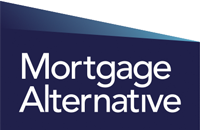BUYING A UNIT OR APARTMENT? NEW CHOICES IN PROPERTY ONLY IF YOU USE MORTGAGE ALTERNATIVE
MA has the power to truly open up consumer choices between different home price points AND the choice of apartment or detached dwelling.
With $20,000 saved, would you prefer to buy a $230,000 apartment with a mortgage…or a $400,000 home with Mortgage Alternative? Read on to find out why.
Before consumers looking for a home buy an apartment (or indeed any home), consider the reasons why you have settled on apartment living, and if they are cost related (i.e. less expensive than a detached home), and consider the following new choices that Mortgage Alternative may create for you!
Everyone appears wedded currently to a mortgage as the only way (financing wise) to break the rent cycle – because that is what they know. But here is where the smart money should be thinking now that there is MA.
It is generally accepted wisdom that the deposit requirement, not loan serviceability, is typically what is holding many (but not all) would be first home buyers out of the market. Look at any of the bank loan calculators on the web for a couple on $100,000 gross income combined and your serviceability is often not a problem. It’s through the roof. It’s usually not the serviceability that is the issue; it’s the deposit.
Many can service a loan over 30 years or even 25 years, but just don’t have the sufficient deposit amount saved to get the best rate or to get a mortgage at all – without paying heaps more interest by extending the loan to 30 or even 40 years. With a mortgage, you require both serviceability of payments AND a deposit suitable to (commensurate with) the total loan value relative to home value.
How much a couple with no children and a combined gross household income of $100,000 pa (for example) could usually afford to borrow will depend on their monthly liabilities after they take the home loan requested.
Conceivably, this could be an 88% (or higher) mortgage on a $400,000 home, but rarely as high as 95% as the banks (even after arranging for mortgage insurance to protect them) will not lend any higher than this without the rate going up.
Based on the REIQ researched average deposit of 12% required in Queensland (for example), a couple buying their first home for $400,000 would need $48,000 deposit saved – less if they get the First Home Buyer or Great Start Grant on a newly constructed home – but a couple on $100,000 gross is not “average”. It’s high.
Under Mortgage Alternative, they would need only $20,000 deposit saved or 5%. You can do the same numbers at a $500,000 home and $300,000 if you like, but let’s stay with a $400,000 home for this example.
If a typical couple on $100,000 pa gross only had $20,000 saved, they could afford (based on a say 93% lend and a 7% deposit requirement) only a $280,000 apartment. With MA, an average qualifying customer could stretch to a $400,000 home! Not a $280,000 apartment! Whether it is a 7% deposit or less actually depends on the bank’s views of your credit standing and their credit and risk policies, but this is arguably in the ballpark.
So effectively, Mortgage Alternative (by lowering the deposit requirement now to 5% with the balance of the deposit coming from Assquire® investors) could potentially allow this typical first home buyer couple to access not only apartments priced up to $280,000 but apartments up to $400,000 – or perhaps not buy an apartment at all – and take a detached home up to $400,000.
In this way, MA has the power to truly open up consumer choices between different home price points AND the choice of apartment or detached dwelling.
The following article that appeared in March 2014 in other press sounds the same warning I have sounded in social media previously. Source: http://www.propertyobserver.com.au/terry-ryder/29453-units-continue-to-challenge-houses-as-the-dwelling-of-choice.html
“The Bankwest Housing Density Report revealed that 43% of new home approvals are medium-density dwellings. This is up from the 39% national average in the previous year.
Not surprisingly, capital cities account for 87% of medium-density approvals in the past 12 months. In five cities, units and townhouses comprised more than half of total dwelling approvals – including 68% in Sydney, Canberra and Darwin, as well as 55% in Melbourne and 53% in Brisbane.
Partly this is about affordability. In Sydney, the median unit price is $221,000 less than the median house price. In Melbourne the difference is $138,000, while in Darwin it’s $165,000.
But it’s more to do with lifestyle choices. Busy lives and the value people place on their leisure time points many buyers to a life-maintenance dwelling that doesn’t have gardens to weed and lawns to mow.
For those who want to be close to the inner city at a reasonable price, an apartment is the favoured option.
But buyers need to be careful. Several of our inner-city unit markets are over-supplied and it’s likely to get worse.
Melbourne already has huge vacancies (up to 10% in some near-city markets) and, according to PRDnationwide research, there are 88 large-scale unit projects under way or proposed.
Brisbane has high vacancies (6% in the CBD and approaching those levels in several inner-city suburbs) and has 69 large unit developments coming up.”
